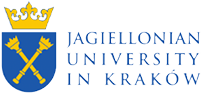Canon Law in the Ius Commune: Summae and Commentaries
This chapter explores the development and interpretation of canon law within the context of the ius commune, focusing on its exegetical techniques, literary forms, and methodological innovations from the 12th century onwards. It examines the interplay between canon law and Roman law, emphasizing their mutual influence and integration over time.
Summae et commentaria (Summae and Commentaries)
The chapter begins by discussing the exegetical apparatus that emerged alongside Gratian’s Decretum. These interpretative texts were not merely literary genres but dynamic tools for teaching and application, reflecting the lively intellectual environment of the schools. They were products of collaborative work between masters and students, contributing to the communal dimension of legal scholarship. Many of these works integrated glosses, notabilia, quaestiones, and summae, blurring rigid distinctions between literary forms.
La critique des genres littéraires : écrits de forme et écrits d’usage (Critique of Literary Genres: Formal and Practical Writings)
Exegetical writings evolved from practical teaching needs rather than formal literary conventions. The interpretative texts often included excerpts and annotations, combining elements from earlier works. Originality lay not in the creation of entirely new content but in the selection and reinterpretation of existing texts to address contemporary legal and societal issues.
L’exégèse, projection du processus d’autonomisation du droit canonique (Exegesis and the Autonomization of Canon Law)
With the introduction of Gratian’s Decretum, canon law began to establish itself as an autonomous legal discipline, distinct from theology. This required adapting interpretative tools to clarify contradictions within the canons and harmonize them with evolving legal needs. Early interpreters were influenced by theological traditions but gradually developed unique methods to delineate legal concepts like natural law, divine law, and human law.
La complexité des formes de l’interpretatio(The Complexity of Interpretation Techniques)
Interpretative practices encompassed glosses, notabilia, brocards, and quaestiones, among others. These tools reflected a dynamic interaction between legal norms and their application. Over time, analytical methods gave way to more systematic approaches, resulting in monumental works such as summae and commentaries. These texts addressed practical legal issues, ensuring their relevance in both academic and societal contexts.
Les Summae (The Summae)
The Summae were comprehensive legal texts that synthesized and systematized canon law. Key examples include:
- Paucapalea: Often considered the first summa on Gratian’s Decretum, emphasizing its pedagogical purpose.
- Rufin’s Summa Decretorum: A significant work combining analytical and systematic methods to address complex doctrinal issues.
- Huguccio of Pisa’s Summa: A synthesis of earlier interpretations, integrating Roman law principles to address the challenges of the ius novum.
L’ampleur du phénomène en Europe (The Scale of the Phenomenon in Europe)
The spread of canon law studies across Europe gave rise to regional schools, including:
- Franco-Rhenish School: Influenced by Étienne de Tournai and the integration of Roman law into canon law.
- Anglo-Norman School: Rooted in the works of Gerard Pucelle, who brought the Bologna school’s methodologies to England.
- German and Italian Schools: Centers like Cologne and Bologna played pivotal roles in developing systematic legal interpretations.
Vers de nouvelles exigences et de nouveaux modèles d’interprétation : Le ius commune et les Décrétalistes (Toward New Demands and Models of Interpretation: The Ius Commune and the Decretalists)
The integration of canon and Roman law during the 13th century marked the maturity of the ius commune. Canonists increasingly relied on Roman law principles to resolve complex cases, harmonizing ecclesiastical and secular norms. The publication of the Liber Extra by Gregory IX solidified this synthesis, fostering a generation of jurists skilled in both legal traditions.
Conclusion
Rosalba Sorice’s analysis highlights the dynamic evolution of canon law within the framework of the ius commune. From its roots in Gratian’s Decretum to the synthesis of canon and Roman law, the chapter underscores the intellectual rigor and practical adaptability of medieval legal scholarship. The interpretative works of canonists not only shaped ecclesiastical law but also influenced broader legal traditions across Europe.







